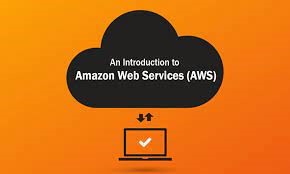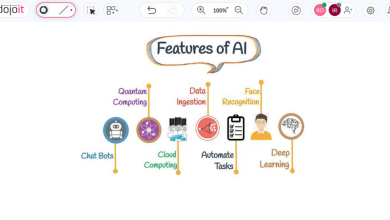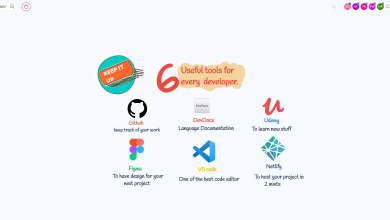What is Amazon Web Services? Introduction to Amazon Cloud Services

What is Amazon Web Services? Introduction to Amazon Cloud Services
Amazon Web Services Platform ( AWS) is a platform that provides reliable, scalable, flexible, easy-to-use, and cost-effective cloud computing solutions.
The platform comes with a combination of Infrastructure as a Service (IaaS), Platform as a Service (PaaS), and Packaged Software as a Service (SaaS) offerings.
If you are looking to learn about AWS, you can access the AWS free course platform and you can also go through the free cloud technology courses and even the free Google Cloud courses .
Take a look at all the different free SaaS services for students that you might find useful.
AWS history
- 2002: Launch of AWS services.
- 2006: Launches its products in the cloud.
- 2012: Holds the first event for clients.
- 2015: Reveals its achieved income of 4.6 billion dollars.
- 2016: Exceeds $10 billion revenue target.
- 2019: Offers more than 100 cloud services.
AWS Top Services
Amazon Web Services offers a wide range of global cloud-based products for different business purposes
Products include storage, databases, analytics, networking, mobile devices, development tools, enterprise applications, all with a pay-per-use model.
AWS Compute Services
Here are the top cloud computing services offered by Amazon:
- EC2 (Elastic Compute Cloud) : EC2 is a virtual machine in the cloud where you have control at the operating system level and can run it from the cloud whenever you want.
- LightSail: It is a cloud computing tool that automatically deploys and manages the computer, storage, and network capabilities needed to run applications, CMS, etc.
- Elastic Beanstalk: It is the perfect tool for web applications, whatever technology you use. Beanstalk provides the automated deployment and provisioning of resources needed to maintain a highly scalable production website.
- EKS (Managed Kubernetes Service): The tool allows you to run Kubernetes in the Amazon cloud environment without any additional installation.
- AWS Lambda: This AWS service allows you to execute code in the cloud, the tool offers great cost savings since you only pay for the moments in which the code is executed.
Migration services
Migration services used to physically transfer data between data centers and AWS.
- DMS (Database Migration Service) : The DMS service can be used to migrate databases within the AWS site, helping you migrate from one type of database to another, for example from Oracle to MySQL .
- SMS (Server Migration Service) : SMS migration services allow you to migrate on-site servers to AWS easily and quickly.
- Snowball – Snowball is a small application that allows you to transfer terabytes of data in and out of the AWS environment.
Storage services
Amazon Glacier : It is a very low-cost storage service that offers secure and fast storage for files and data backup.
Amazon Elastic Block Store (EBS) – Provides block-level storage for use with Amazon EC2 instances. Amazon Elastic Block Store volumes are network-attached and independent of an instance’s lifetime.
AWS Storage Gateway – This AWS service connects on-premises software applications with cloud-based storage and provides secure integration between a company’s on-premises and AWS storage infrastructure.
Security services
- IAM (Identity and Access Management) : IAM is a secure cloud security service that helps you manage users, assign policies, form groups to manage multiple users.
- Inspector : It is an agent that you can install on your virtual machines, which reports any security vulnerabilities.
- Certificate Manager : The service offers free SSL certificates for your Route53-managed domains.
- WAF (Web Application Firewall) : The WAF security service offers application-level protection and allows you to block SQL injection and helps you block cross-site scripting attacks.
- Cloud Directory – This service allows you to create flexible cloud-native directories to manage data hierarchies across multiple dimensions.
- KMS (Key Management Service) : It is a managed service. This security service helps you create and control the encryption keys that allow you to encrypt your data.
- Organizations – You can create groups of AWS accounts using this service to manage security and automation settings.
- Shield : Shield is DDoS (Distributed Denial of Service Protection Service). Provides protection against web applications running on AWS.
- Macie – Offers a data visibility security service that helps classify and protect your sensitive critical content.
- GuardDuty – Provides threat detection to protect your AWS accounts and workloads.
Database services
- Amazon RDS : It is an AWS database service that is easy to set up, operate, and scale a relational database in the cloud.
- Amazon DynamoDB : It is a fast and fully managed NoSQL database service. It is a simple service that enables cost-effective data storage and retrieval. It also allows you to serve any level of request traffic.
- Amazon ElastiCache : Is a web service that makes it easy to deploy, operate, and scale an in-memory cache in the cloud.
- Neptune : It is a fast, reliable and scalable graph database service.
- Amazon RedShift – This is Amazon’s data warehouse solution that you can use to perform complex OLAP queries.
Analytics services
- Athena – This analytics service enables persistent SQL queries against your S3 bucket to find files.
- CloudSearch – You should use this AWS service to create a fully managed search engine for your website.
- ElasticSearch : It is similar to CloudSearch, however, it offers more features such as application monitoring.
- Kinesis – This AWS analytics service helps you stream and analyze real-time data at scale.
- QuickSight – A business analytics tool that helps create dashboard visualizations on Amazon Web Services. For example, S3, DynamoDB, etc.
- EMR (Elastic Map Reduction) – AWS Analytics Service is mainly used for big data processing like Spark, Splunk, Hadoop, etc.
- Data Pipeline : Allows you to move data from one place to another. For example, from DynamoDB to S3.
Management services
- CloudWatch – Cloud Watch helps monitor AWS environments such as EC2, RDS instances, and CPU utilization; it also triggers alarms depending on various metrics.
- CloudFormation : It is a way to turn the infrastructure into the cloud. Templates can be used to provide a complete production environment in minutes.
- CloudTrail – Provides an easy method to audit AWS resources and helps keep track of all changes.
- OpsWorks : The OpsWorks service allows you to automate Chef/Puppet deployments in the AWS environment.
- Config – This AWS service monitors the environment and sends alerts about changes when certain defined configurations are broken.
- Service catalog? : A service for large companies that manages the authorization of which users use each service and which do not.
- AWS Auto Scaling : A service that allows you to automatically scale your resources, both up and down, based on given CloudWatch metrics.
- Systems Manager : An AWS service that allows you to group AWS resources and identify potential problems so that you can act on them.
- Managed Services : Offers the administration of AWS infrastructures, allowing the user to focus solely on their applications.
Internet of Things
- IoT Core : It is a managed AWS cloud service. The service enables connected devices such as cars, light bulbs, sensor grids to securely interact with cloud applications and other devices.
- IoT Device Management – Allows you to manage IoT devices at any scale.
- IoT Analytics – This AWS IOT service is useful for performing analytics on data collected by your IoT devices.
- Amazon FreeRTOS – This real-time operating system for microcontrollers helps connect IoT devices on the local server or in the cloud.
Application services
- Pass-Through Functions : It’s a way to visualize what’s going on inside your app and what different microservices you’re using.
- SWF (Simple Workflow Service) : The service helps you coordinate both automated tasks and human-driven tasks.
- SNS (Simple Notification Service) : You can use this service to send you notifications in the form of email and SMS based on certain AWS services.
- SQS (Simple Queue Service) : Use this AWS service to decouple your applications. It is a pull-based service.
- Elastic Transcoder – This AWS service tool helps you change the format and resolution of a video to support various devices such as tablets, smartphones, and laptops of different resolutions.
Administration and implementation
- AWS CloudTrail – Services log calls to the AWS API and send backlog files to you.
- Amazon CloudWatch – Tools that monitor AWS resources such as Amazon EC2 and Amazon RDS DB instances. It also allows you to monitor custom metrics created by user applications and services.
- AWS CloudHSM – This AWS service helps meet corporate, regulatory, and contractual compliance requirements to keep data secure by using hardware security module (HSM) devices within the AWS environment.
Development tools
- CodeStar – Codestar is a cloud-based service for creating, managing, and working with various software development projects on AWS.
- CodeCommit : This is AWS’s version control service that allows you to store your code and other assets privately in the cloud.
- CodeBuild – This Amazon developer service helps you automate the process of building and building your code.
- CodeDeploy : It is a way to deploy your code to EC2 instances automatically.
- CodePipeline : Helps to create a deployment pipeline like test, build, test, authentication, deployment in development and production environments.
- Cloud9 : It is an integrated development environment for writing, running and debugging code in the cloud.
Mobile services
- Mobile Hub : Allows you to add, configure and design features for mobile applications.
- Cognito : Allows users to sign up using their social identity.
- Device Farm – Device Farm helps improve app quality by quickly testing hundreds of mobile devices.
- AWS AppSync – Is a fully managed GraphQL service that offers real-time data synchronization and offline programming capabilities.
Business productivity
- Alexa for Business : Empower an organization with voice services, using Alexa that allows you to build custom voice skills for an organization.
- Chime : Can be used for online meetings and video conferences.
- WorkDocs : Helps to store documents in the cloud.
- WorkMail : Allows you to send and receive business emails.
Application and desktop streaming
- WorkSpaces – Workspace is a VDI (Virtual Desktop Infrastructure) that allows you to use remote desktops in the cloud.
- AppStream : It is a way to stream desktop applications to users using the web browser. For example, using MS Word in Google Chrome.
Artificial intelligence
- Lex – The Lex tool helps to create chatbots quickly.
- Polly : It is AWS’s text-to-speech service that allows you to create audio versions of your notes.
- Rekognition : It is the AWS facial recognition service that helps recognize faces and objects in images and videos.
- SageMaker – Sagemaker allows you to build, train, and deploy machine learning models at any scale.
- Transcribe – AWS’s speech-to-text service that offers affordable, high-quality transcriptions.
- Translate : It is a tool very similar to Google Translate that allows you to translate text from one language to another.
AR and VR (augmented reality and virtual reality)
Sumerian – Sumerian is a set of tools for delivering high-quality virtual reality (VR) experiences over the web. The service allows you to create interactive 3D scenes and publish it as a website for users to access.
Also Check AWS Certified Solutions Architect Associate Practice Exams
Engagement with the client
- Amazon Connect – Amazon Connect allows you to create a customer service center in the cloud.
- Pinpoint – Pinpoint helps to understand users and interact with them.
- SES (Simple Email Service) : Helps to send mass emails to customers at a relatively cost-effective price.
Game development
GameLift : It is an AWS managed service, you can use the service to host dedicated game servers and it allows you to seamlessly scale without the need to take your game offline.
AWS Services Applications
Amazon Web Services are widely used for various computing purposes, such as:
- Hosting of web pages.
- Application hosting / SaaS hosting.
- Media sharing (image / video).
- Mobile and social applications.
- Content delivery and media distribution.
- Storage, backup and disaster recovery.
- Development and test environments.
- academic computing.
- The search engines.
- Social networks.
Companies using AWS
AWS is used by many of the largest companies including: Instagram, Zoopla, Pinterest, Netflix, Dropbox, Etsy, Talkbox, Playfish, Ftopia.
Advantages of AWS
Here are the benefits of using AWS services:
- AWS enables organizations to use familiar programming models, operating systems, databases, and architectures.
- It’s a cost-effective service that allows you to pay only for what you use, with no upfront or long-term commitments.
- You won’t need to spend money running and maintaining data centers.
- Offers fast implementations.
- You can easily add or remove capacity.
- Cloud access is allowed quickly with unlimited capacity.
- Total cost of ownership is very low compared to any private/dedicated server.
- It offers centralized billing and management.
- Offers hybrid capabilities.
- It allows you to deploy an application in various regions of the world with just a few clicks.
AWS Disadvantages
- If you need more immediate or intensive assistance, you will have to opt for paid support packages.
- Amazon Web Services can run into some common cloud computing issues when moving to a cloud. For example, downtime, limited control, and backup protection.
- AWS sets default limits for resources that differ from region to region. These resources consist of images, volumes, and snapshots.
- There are hardware-level changes in applications that may not provide the best application performance and usage.
AWS Best Practices
- You need to design to fail, but nothing will fail.
- It is important to decouple all components before using AWS services.
- You need to keep dynamic data closer to the computation and static data closer to the user.
- It is important to know the security and performance trade-offs.
- You pay for compute capacity using the hourly payment method.
- Get in the habit of making a one-time payment for each instance you want to reserve and receive a significant discount on the hourly charge.




